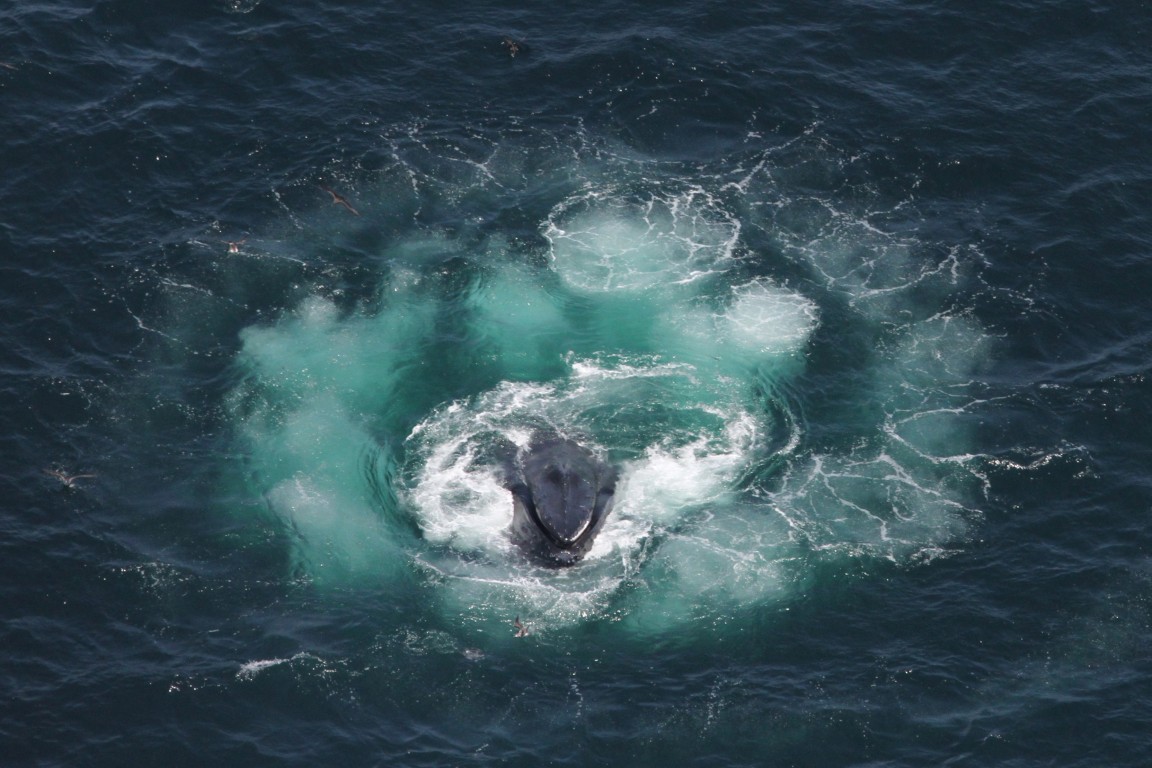Humpback Whale Facts
- Order: Cetacea
- Suborder: Mysticeti
- Family: Balaenopteridae
- Genus: Megaptera
- Species: novaeangliae
- Status: Endangered throughout its range
- Off our coast: April-November
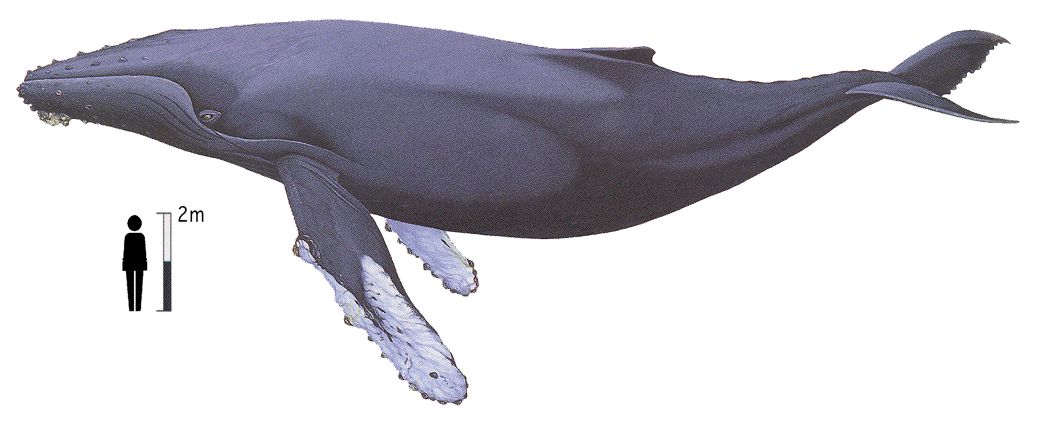
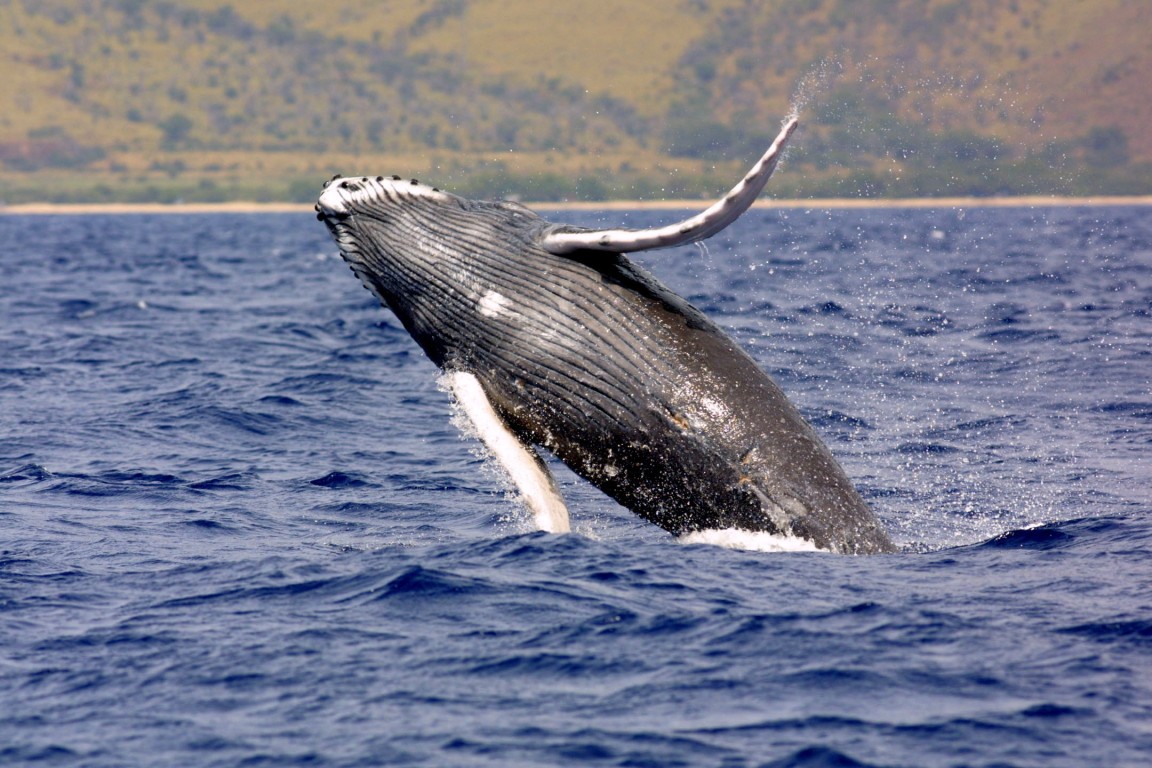
Probably the most charismatic of the whales is the Humpback Whale. Their frequent fluking and breaching, their long pectoral flippers (which can be up to 15 feet long!) and their amazing songs [would be cool to link to an audio clip!] make them truly unique. The the fact that they spend the winters in places we like to visit, such as Hawaii and the Caribbean, put them in our view more than most other whales.
Humpback whales occur along the Mendocino Coast from early April to November. Like blue whales, they spend their time a little farther offshore than our close-in gray whales, but are occasionally seen from shore during those months. Over the past few years we have had great opportunities to see these whales off our coast both in spring and in the fall.
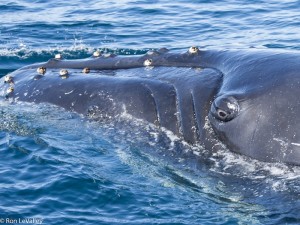
Size and identification
Humpback whales reach about 40 feet in length as adults with the females, as in most whales, slightly larger than males. Their spout is low and bushy, slightly larger than that of a gray whale, but not as tall and straight as the blue whale. The spout can be V-shaped or heart-shaped depending on the angle of the viewer.
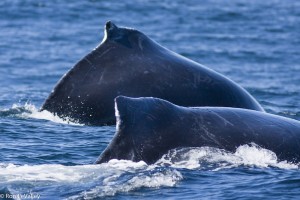
The color of their back is very dark gray to black, distinguishing them from grays and blues. One distinctive behavior of the humpback is the “humping” of their back when they roll at the surface to breath. The dorsal fin is on top of the hump and can be very fin-like or look like a mangled bump! This behavior and the shape of the fin often makes humpbacks easy to identify.
Another characteristic unique to the Humpback Whale is the long pectoral flipper. No other whale has such a long front fin, and it is thought that the Humpbacks use this long flipper for maneuverability when feeding and maybe courting.
Humpback whales are probably the most frequent “breachers” of our whales, although gray whales can come close. Breaching means aggressively leaping out of the water and returning with a big splash. When the Humpbacks breach you can often see the long pectoral fin waving away from the body.
Another similar behavior is “spy-hopping” which is sticking the tip of the rostrum out of the water slowly and then slowly sinking back underwater.
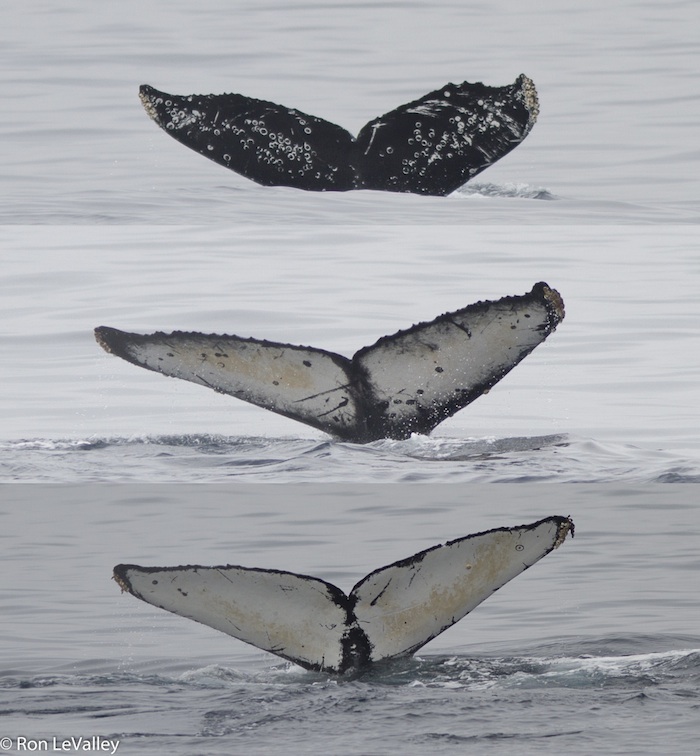
Humpbacks also characteristically raise their tail fins or “flukes” at the end of a series of spouts. The underside of the tail is uniquely patterned – sort of like our fingerprints — allowing for individual identification of these animals.
Barnacles
Humpback whales have two species of barnacles unique to their group. One is a normal looking barnacle and the other is on a stalk. These barnacles are usually found on the rostrum, on the leading edges of the long pectoral flippers and on the trailing edge of the tail fins or flukes.
Feeding
Humpback whales feed primarily on schooling fish, but they will also eat krill and other plankton. Their feeding behavior is fun to watch as they often feed in cooperation with others and “herd” the fish into tight balls before charging in with an open mouth. Sometimes this herding is performed by blowing bubbles underwater in a circle to corral the fish. This is called “bubble-net” feeding and is common in the Alaskan waters (click image below to see a video!)
